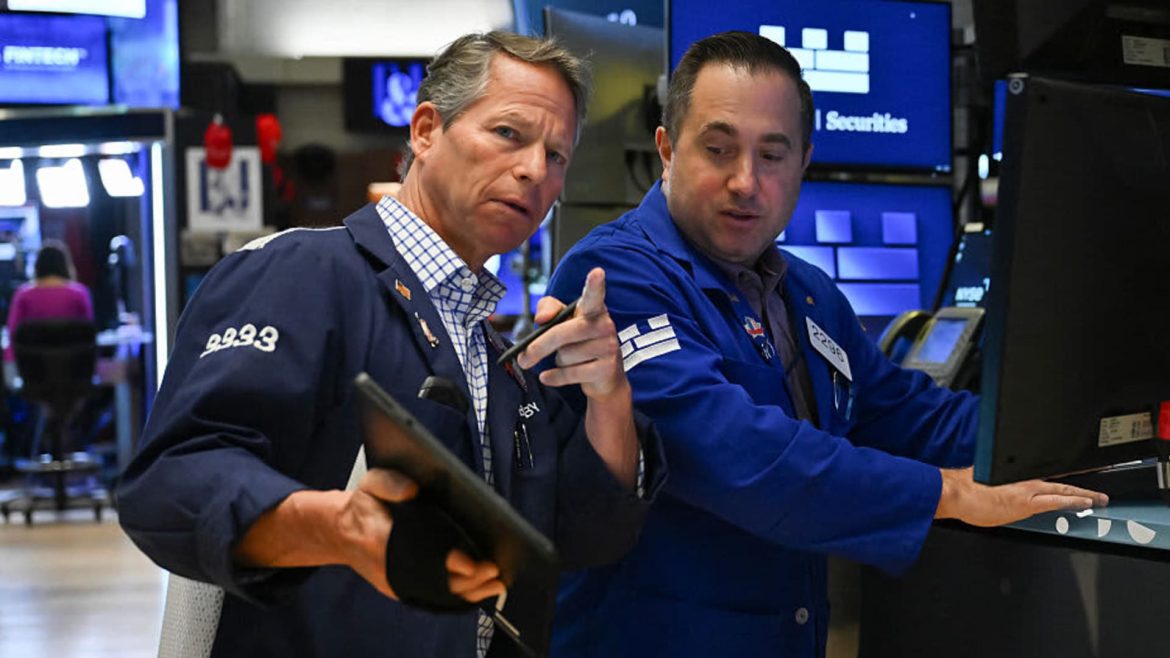Navigating Market Sentiment Amid Rising Middle East Tensions: Should Investors Buy the Dip or Bail?
The world’s financial markets often react sharply to geopolitical turmoil, and the recent intensification of tensions in the Middle East has reignited a familiar investor quandary: should one “buy the dip” or exit the market to avoid further losses? This question, now urgent for many given recent Wall Street dips and simmering fears, demands a careful look at historical context, market psychology, and risk management strategies.
—
Understanding the Current Market Landscape
Recent headlines reveal a palpable unease among investors. Wall Street experienced a notable dip as geopolitical tensions stirred fears, despite a calming inflation report that might otherwise have supported market confidence. The narrative has become familiar: headlines from Reuters, NST, and Bloomberg document declining stocks and retreating Treasury yields as investors grow risk-averse. Yet, alongside this retreat, some voices advocate for buying the dip as a strategic opportunity rather than an act of despair.
This dichotomy frames the current dilemma sharply. On one hand, markets reflect anxiety about the geopolitical risk premium being priced in; on the other, the underlying belief persists among some investors that dips triggered by such tensions are often short-lived and, historically, followed by recoveries.
—
Historical Perspectives on “Buying the Dip”
The principle of “buying the dip” traces back to contrarian investment wisdom: buy when others are fearful, and sell when others are greedy. Historically, dips correlated with war or geopolitical conflict have led to short-term pullbacks but have also produced notable rebounds over time. Market analysts note that despite shocks – like trade wars or military escalations – the long-term trend of markets has often been resilient.
However, skepticism is warranted. A thread of caution is visible in some expert commentary noting that while the concept seems sound theoretically, its practical execution is challenging. How does one know if a dip is genuine or a precursor to a prolonged downtrend? Some argue that dips resembling blood in the streets are easier to recognize only in hindsight. These concerns highlight the importance of methodical evaluation rather than emotional reaction.
—
Technical and Strategic Approaches to Buying the Dip
For investors looking beyond intuition, technical strategies provide objective criteria to guide decisions. For instance, the 200-day moving average is often used as a trend filter—a dip buy signal below this average can mark buying opportunities. Researchers have identified historically strong buy-the-dip moments coinciding with readings below certain market stress indicators (e.g., the VIX dropping below 10 has frequently marked bottoms in 2002, 2009, 2011, 2018, 2020, and even 2025).
Additionally, some investors, notably those with significant capital and tolerance for volatility, have recently increased their dip-buying substantially. For example, a newsletter recounts an aggressive position in S&P 500 and leading tech stocks amid recent corrections, an approach signaling confidence in long-term recovery despite short-term turbulence.
—
The Psychological and Practical Pitfalls
Many financial advisors emphasize that buying the dip, while effective in theory, requires discipline and a strong stomach for volatility. Emotional biases—fear and greed—can undermine rational decision-making. The Reddit discussion highlights a widely held viewpoint: no one can predict where the dip bottoms exactly, making timing difficult and stressing the importance of a strong overarching investment plan rather than reactive trades.
Citi’s counsel to wealthy clients to remain cautious amid extreme market swings echoes this point, warning that peak shocks may have passed but volatility persists. This suggests that a nuanced approach, combining readiness to invest with prudent risk management, is advisable.
—
Geopolitical Crisis: A Catalyst for Opportunity or a Warning Sign?
The Middle East tensions add a layer of complexity, as conflicts can rapidly escalate and affect global economic fundamentals—energy prices, supply chains, and inflation expectations. This uncertainty can amplify market volatility and risk premiums. Yet, some experts argue that geopolitical disruptions have historically offered dip-buying opportunities precisely because markets tend to eventually price in the eventual resolution and economic cycle recovery.
For investors, discerning when to “buy” during such episodic stresses hinges on their risk tolerance, investment horizon, and confidence in the fundamental strength of the assets in question. Long-term stockholders often view dips as chances to improve average cost bases, while short-term traders may prefer heightened caution or hedging strategies.
—
Conclusion: A Balancing Act Between Fear and Opportunity
The decision to buy the dip or bail during rising Middle East tensions encapsulates a broader investment truth: there is no one-size-fits-all answer. History demonstrates that markets often recover from geopolitical scares, suggesting a measured dip-buying approach can be rewarding. However, successful implementation demands clear-eyed evaluation, a robust strategy, and emotional discipline.
In volatile times, the wisest investors blend historical insight with contemporary data—watching technical signals, assessing geopolitical risks, and calibrating portfolio exposure to withstand shocks. Buying the dip is not a reflex but a calculated bet on resilience, an exercise in patience and conviction amid uncertainty.
Ultimately, navigating this terrain is less about following catchy slogans and more about thoughtful analysis, aligning decisions with personal goals, and maintaining flexibility as markets and events unfold. Whether to buy or bail remains a personal choice shaped by one’s unique circumstances, but understanding the broader layers behind the market moves provides a stronger foundation for making that call.





